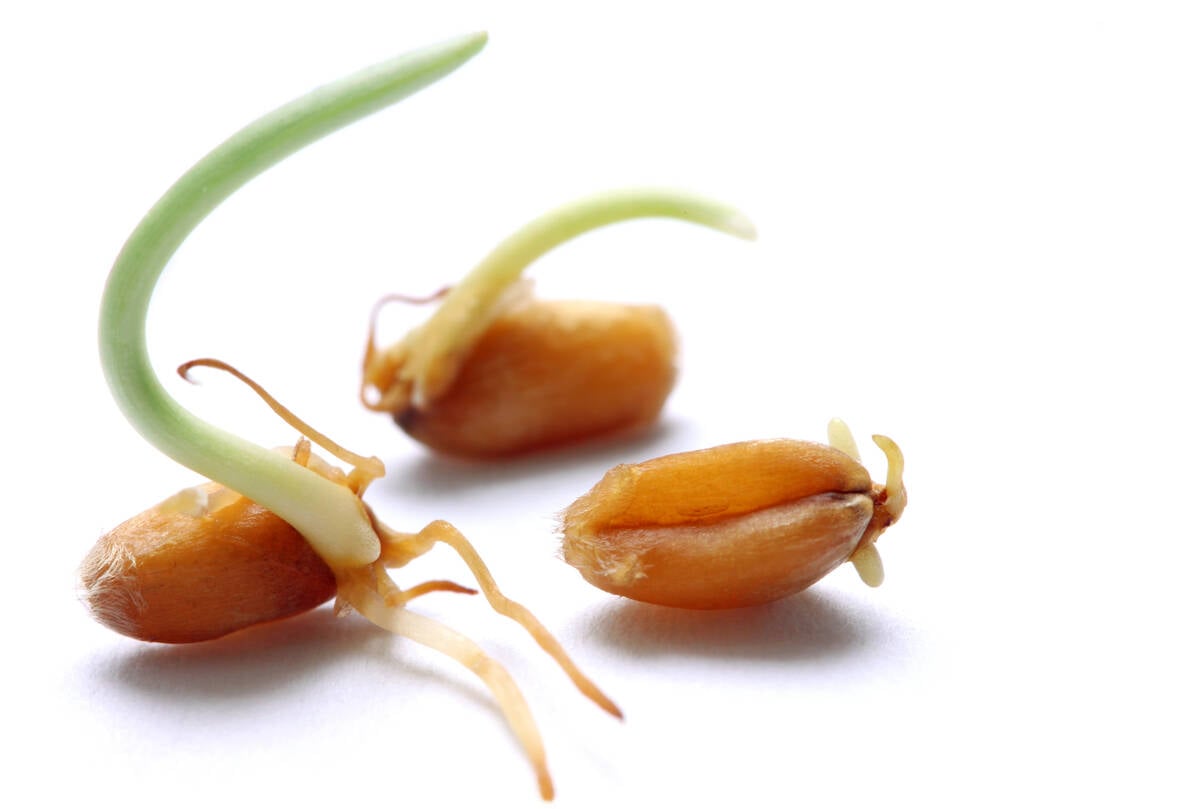LETHBRIDGE — Bryan Corns started growing triticale in the 1990s and today it dominates his operation in southern Alberta.
Triticale is a cross between wheat and rye and it was not so popular when he started growing it.
“It had a poor cousin approach to crops in general,” he said at a recent triticale symposium held in Lethbridge.
As a registered seed grower, he offers six triticale varieties. The crop is primarily grown for livestock feed, but there is growing interest in the food and distillery sectors. His goal is to produce a crop that provides a specific advantage for his growing area of southeastern Alberta and southwestern Saskatchewan.
Read Also

Manitoba farmers fight sprouted wheat after rain
Rain in mid-September has led to wheat sprouting problems in some Manitoba farm fields.
“Triticale is one of the plants that fits the type of soil and type of climate we have,” he said.
He wants something that produces well in a dry climate and is also compatible with other crops.
“Some of the work we have looked to do is the adaptability of various strains of triticale, as well as in conjunction with other plants,” he said.
In his area, an irrigated quarter section is listed at $1.5 million so farmers must grow crops that pay. Growing winter triticale is one way to encourage double use of the land that provides more value.
He also has about 200 cows and can test the crop on them to see if they will eat it. His test is simple. He gives them bales of hay from different sources and watches to see what they eat first.
His seed customers can buy blends of triticale with rye or oats for a grazing crop because that grows well in arid and semi-arid regions. A popular mix is spring and fall triticale plus oats.
After years of working with the crop, customers are now asking for specific varieties by name in their blends.
Andy Watley of Texas has 25 years of experience growing triticale in Kansas, Colorado, New Mexico, Oklahoma and Texas. His company started selling grass seed with a focus on livestock forage systems so triticale was a good fit. He markets his brand of seed as SlickTrit. He estimates there are about 990,000 acres of triticale in the United States where it is used for silage, hay or grazing.
“We know triticale equals corn silage as far as (more) pounds of milk per acre. We paid attention and it was cheaper to raise triticale silage versus corn silage,” he said.
Further, the supply of irrigation water in his area is declining so triticale is a good choice in this climate because it requires less water.
More dairy operations in the southern Plains are trying triticale silage because if harvested at the flag-leaf stage, it yields 18 to 20 percent protein. It produces the same amount of milk per tonne as corn silage and is easier for the cows to digest. In irrigated parts of his region, triticale averages about 16 tonnes of silage per acre.
















